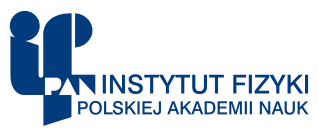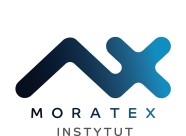- Wyszukaj w całym Repozytorium
- Piśmiennictwo i mapy
- Archeologia
- Baza Młynów
- Nauki przyrodnicze
Wyszukiwanie zaawansowane
Wyszukiwanie zaawansowane
Wyszukiwanie zaawansowane
Wyszukiwanie zaawansowane
Wyszukiwanie zaawansowane

Obiekt
Tytuł: Knowledge as a socially active substance. Our interpretations versus Others "self-interpretations"
Inny tytuł:
Archaeologia Polona Vol. 44 (2006)
Wydawca:
Institute of Archaeology and Ethnology Polish Academy of Sciences
Miejsce wydania:
Opis:
Typ obiektu:
Abstrakt:
This article examines the relation between knowledge of the past and the need for spiritual guidance on the part of the general public. The case study looks at how neo-pagans in our country use and abuse information about the pre-Christian world. By analysing several of the channels (leaflets, websites, performances, regulations, etc.) via which neo-pagans directly express their own positions and attitudes toward information about the past, the article shows how the dehumanized studies about pagan religion are filled with the fictive elements of neo-myth treated here as a dangerous or at least mediocre fabric which structures an awareness of history. It is argued that the side-effects of the irreverence toward the Other, as well as the duties archaeologists and historians (but also novelists, journalists, filmmakers, etc.) have in balancing knowledge and contemporary reality, deserve to be analysed and understood
Bibliografia:
Ankersmit, F. 1989 . Historiography and postmodernism. History and Theory 28: 137—53
Baudrillard, J. 1998. Precesja symulakrów. In Postmodernizm, R. Nycz (ed.), 175—89. Kraków
Bauman, Z. 2003. Razem, osobno. Kraków
Benoist de, A. 2005. On being a pagan. Atlanta
Booth, W.C. 1988. The company we keep: An ethics of fiction. Berkeley
Borgmann, A. 1999. Holding on to reality. The nature of information at the turn of the millennium. Chicago
Brückner, A. 1918. Mitologia słowiańska. Kraków
Connor, W. 1994. Ethnonationalism. The quest for understanding. Princeton
Gieysztor, A. 1982. Mitologia Słowian. Warsaw
Hodder, I. 1998. Theory and practice in archaeology. London
Joyce R., 2002. The languages of archaeology. Dialogue, narrative and writing. Oxford
Kobyliński, Z. 2002. Archaeology on the ruins of ivory towers: What sort of theory do we need? In Archaeologies of Europe. Histories, methods and theories, P.F. Biehl, A. Gramsch and A. Marciniak (eds), 421-4. Münster
Kołakowski, L. 1981. Obecność mitu. Kraków
Merleau Ponty, M. 2001. Fenomenologia percepcji. Warsaw
Moreland, J. 2001. Archaeology and text. London
Moszyński, K. 1967. Kultura ludowa Słowian. Warszawa
Latour, B. 1996. On actor-network theory: a few clarifications. Internet: http://amsterdam.nettime.org/Lists-Archives/nettime-i-980i/msg000i9.html
Lech, J. 1995. Social functions of archaeology in the 20th century. In Whither archaeology? Papers in honour of Evžen Neustupný, M. Kuna and N. Venclova (eds), 93—6. Praha
Lévi-Strauss, C. Myśl nieoswojona. Warszawa
Okraska, R. 2001. W kręgu Odyna i Trygława. Biała Podlaska
Rau, M. 2004. Neopogaństwo w Polsce. Internet: http://www.taraka.most.org.pl/pogan/7_pols_7.htm
Southgate, B. 2000. Why bother with history?: Ancient, modern and postmodern motivations. Essex
Strzelczyk, J. i998. Mity, podania i wierzenia dawnych Słowian. Poznań
Szyjewski, A. 2003. Religia Słowian. Kraków
Tomasiewicz, J. 1994. Stare religie nowej ery. Główne nurty współczesnego neopoganizmu. Nomos 5/6
Turkle, S. 1997. Life on the screen. Identity in the Age of the Internet. New York
Urbańczyk, S. 1991. Dawni Słowianie; wiara i kult. Wrocław
Wiench, P. 2005. Neopaganism in Central-Eastern Europe [the electronic version of the paper delivered at the 5th World Congress of Central and Eastern European Studies in Warsaw, 1995 and at the conference "New Religious Phenomena in Central and Eastern Europe after the Fall of Com-munism", Cracow 1995] Internet: http://vinland.org/heathen/pagancee/#Poland
Czasopismo/Seria/cykl:
Tom:
Strona pocz.:
Strona końc.:
Szczegółowy typ zasobu:
Format:
Identyfikator zasobu:
Źródło:
IAiE PAN, sygn. P 357 ; IAiE PAN, sygn. P 358 ; IAiE PAN, sygn. P 356 ; kliknij tutaj, żeby przejść
Język:
Zasady wykorzystania:
Digitalizacja:
Instytut Archeologii i Etnologii Polskiej Akademii Nauk
Lokalizacja oryginału:
Biblioteka Instytutu Archeologii i Etnologii PAN
Dostęp:
Kolekcje, do których przypisany jest obiekt:
- Repozytorium Cyfrowe Instytutów Naukowych > Kolekcje Partnerów > Instytut Archeologii i Etnologii PAN > Publikacje Pracowników i Wydawnictwa IAE PAN
- Repozytorium Cyfrowe Instytutów Naukowych > Kolekcje Partnerów > Instytut Archeologii i Etnologii PAN > Publikacje Pracowników i Wydawnictwa IAE PAN > Czasopisma bieżące
- Repozytorium Cyfrowe Instytutów Naukowych > Piśmiennictwo > Czasopisma/Artykuły
- Repozytorium Cyfrowe Instytutów Naukowych > Kolekcje Partnerów > Instytut Archeologii i Etnologii PAN > Publikacje Pracowników i Wydawnictwa IAE PAN > Czasopisma bieżące > Archaeologia Polona
Data ostatniej modyfikacji:
3 mar 2023
Wszystkie dostępne wersje tego obiektu:
https://rcin.org.pl./publication/77328
Wyświetl opis w formacie RDF:
Wyświetl opis w formacie RDFa:
| Nazwa wydania | Data |
|---|

 INSTYTUT ARCHEOLOGII I ETNOLOGII POLSKIEJ AKADEMII NAUK
INSTYTUT ARCHEOLOGII I ETNOLOGII POLSKIEJ AKADEMII NAUK
 INSTYTUT BADAŃ LITERACKICH POLSKIEJ AKADEMII NAUK
INSTYTUT BADAŃ LITERACKICH POLSKIEJ AKADEMII NAUK
 INSTYTUT BADAWCZY LEŚNICTWA
INSTYTUT BADAWCZY LEŚNICTWA
 INSTYTUT BIOLOGII DOŚWIADCZALNEJ IM. MARCELEGO NENCKIEGO POLSKIEJ AKADEMII NAUK
INSTYTUT BIOLOGII DOŚWIADCZALNEJ IM. MARCELEGO NENCKIEGO POLSKIEJ AKADEMII NAUK
 INSTYTUT BIOLOGII SSAKÓW POLSKIEJ AKADEMII NAUK
INSTYTUT BIOLOGII SSAKÓW POLSKIEJ AKADEMII NAUK
 INSTYTUT CHEMII FIZYCZNEJ PAN
INSTYTUT CHEMII FIZYCZNEJ PAN
 INSTYTUT CHEMII ORGANICZNEJ PAN
INSTYTUT CHEMII ORGANICZNEJ PAN
 INSTYTUT FILOZOFII I SOCJOLOGII PAN
INSTYTUT FILOZOFII I SOCJOLOGII PAN
 INSTYTUT GEOGRAFII I PRZESTRZENNEGO ZAGOSPODAROWANIA PAN
INSTYTUT GEOGRAFII I PRZESTRZENNEGO ZAGOSPODAROWANIA PAN
 INSTYTUT HISTORII im. TADEUSZA MANTEUFFLA POLSKIEJ AKADEMII NAUK
INSTYTUT HISTORII im. TADEUSZA MANTEUFFLA POLSKIEJ AKADEMII NAUK
 INSTYTUT JĘZYKA POLSKIEGO POLSKIEJ AKADEMII NAUK
INSTYTUT JĘZYKA POLSKIEGO POLSKIEJ AKADEMII NAUK
 INSTYTUT MATEMATYCZNY PAN
INSTYTUT MATEMATYCZNY PAN
 INSTYTUT MEDYCYNY DOŚWIADCZALNEJ I KLINICZNEJ IM.MIROSŁAWA MOSSAKOWSKIEGO POLSKIEJ AKADEMII NAUK
INSTYTUT MEDYCYNY DOŚWIADCZALNEJ I KLINICZNEJ IM.MIROSŁAWA MOSSAKOWSKIEGO POLSKIEJ AKADEMII NAUK
 INSTYTUT PODSTAWOWYCH PROBLEMÓW TECHNIKI PAN
INSTYTUT PODSTAWOWYCH PROBLEMÓW TECHNIKI PAN
 INSTYTUT SLAWISTYKI PAN
INSTYTUT SLAWISTYKI PAN
 SIEĆ BADAWCZA ŁUKASIEWICZ - INSTYTUT TECHNOLOGII MATERIAŁÓW ELEKTRONICZNYCH
SIEĆ BADAWCZA ŁUKASIEWICZ - INSTYTUT TECHNOLOGII MATERIAŁÓW ELEKTRONICZNYCH
 MUZEUM I INSTYTUT ZOOLOGII POLSKIEJ AKADEMII NAUK
MUZEUM I INSTYTUT ZOOLOGII POLSKIEJ AKADEMII NAUK
 INSTYTUT BADAŃ SYSTEMOWYCH PAN
INSTYTUT BADAŃ SYSTEMOWYCH PAN
 INSTYTUT BOTANIKI IM. WŁADYSŁAWA SZAFERA POLSKIEJ AKADEMII NAUK
INSTYTUT BOTANIKI IM. WŁADYSŁAWA SZAFERA POLSKIEJ AKADEMII NAUK



































